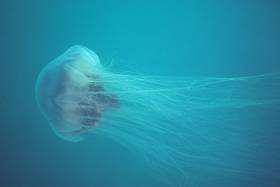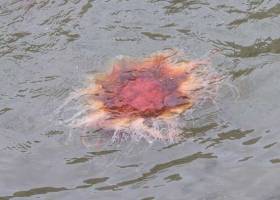Displaying items by tag: Lion's Mane
Lion’s Mane Jellyfish Warning For Dublin Bay
#Jellyfish - Swimmers have been warned away from Seapoint and Sandycove on the south shores of Dublin Bay after sightings of potentially dangerous lion’s mane jellyfish in the water.
Dun Laoghaire-Rathdown County Council has put up warning signs in the relevant areas to advise the public on the large jellyfish, whose stings from hundreds of tentacles can cause anaphylactic shock — even many days after they have beached.
Triathlon Under Threat From Dangerous Jellyfish In Sandycove
#Jellyfish - Organisers of tomorrow's Ironman triathlon in Dublin Bay are currently monitoring the appearance of Lion's Mane jellyfish in the waters of the swimming course.
According to The Irish Times, the Ironman event is scheduled to begin early on Sunday 14 August with a 1.9km swim across the bay from Sandycove, which has been red-flagged since Wednesday after a number of the dangerous jellyfish washed up on the beach.
The Lion's Mane's powerful sting is known to cause anaphylactic shock, which is potentially fatal – and the sting is still potent even days after a jellyfish has died, as previously reported on Afloat.ie.

























































